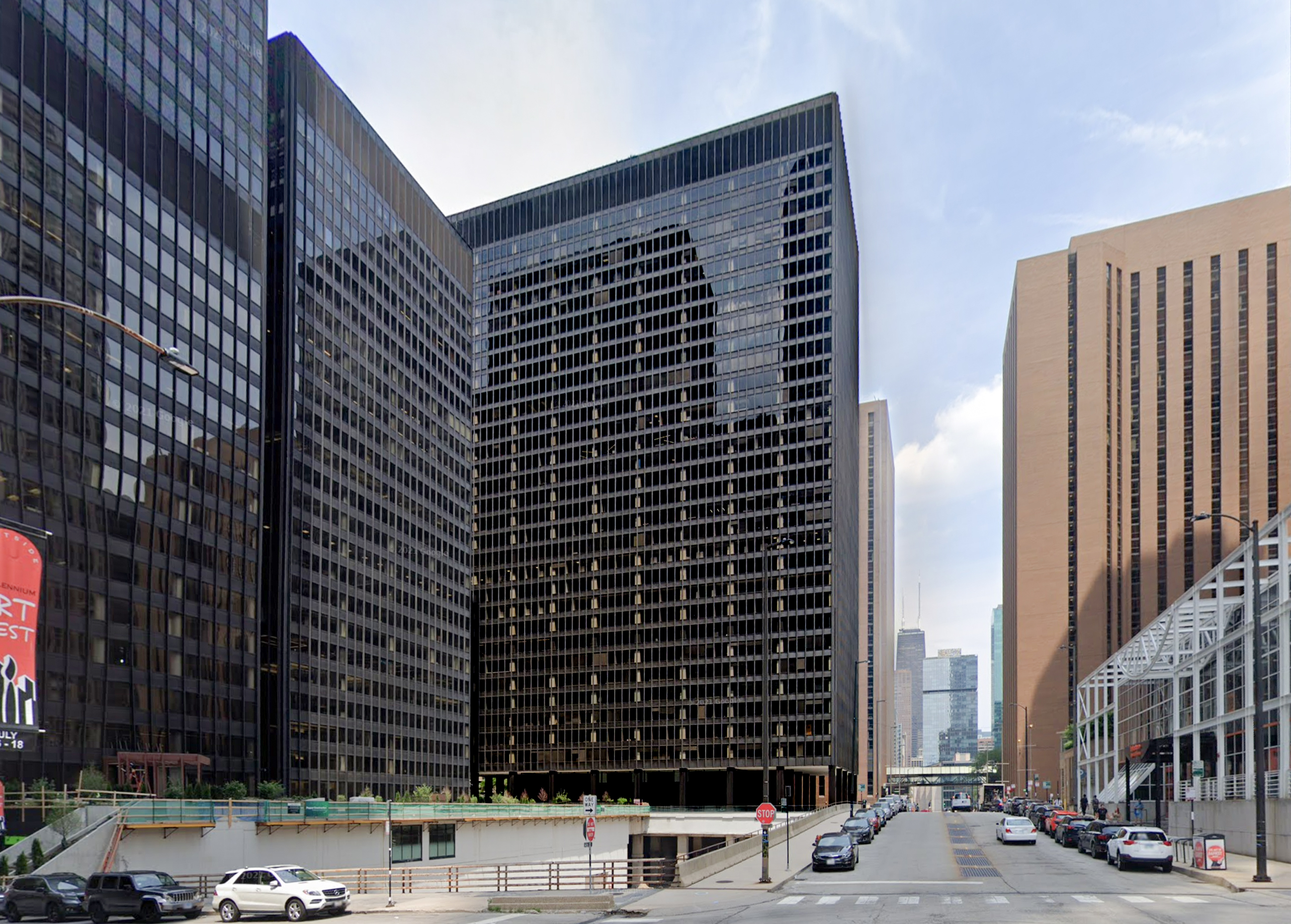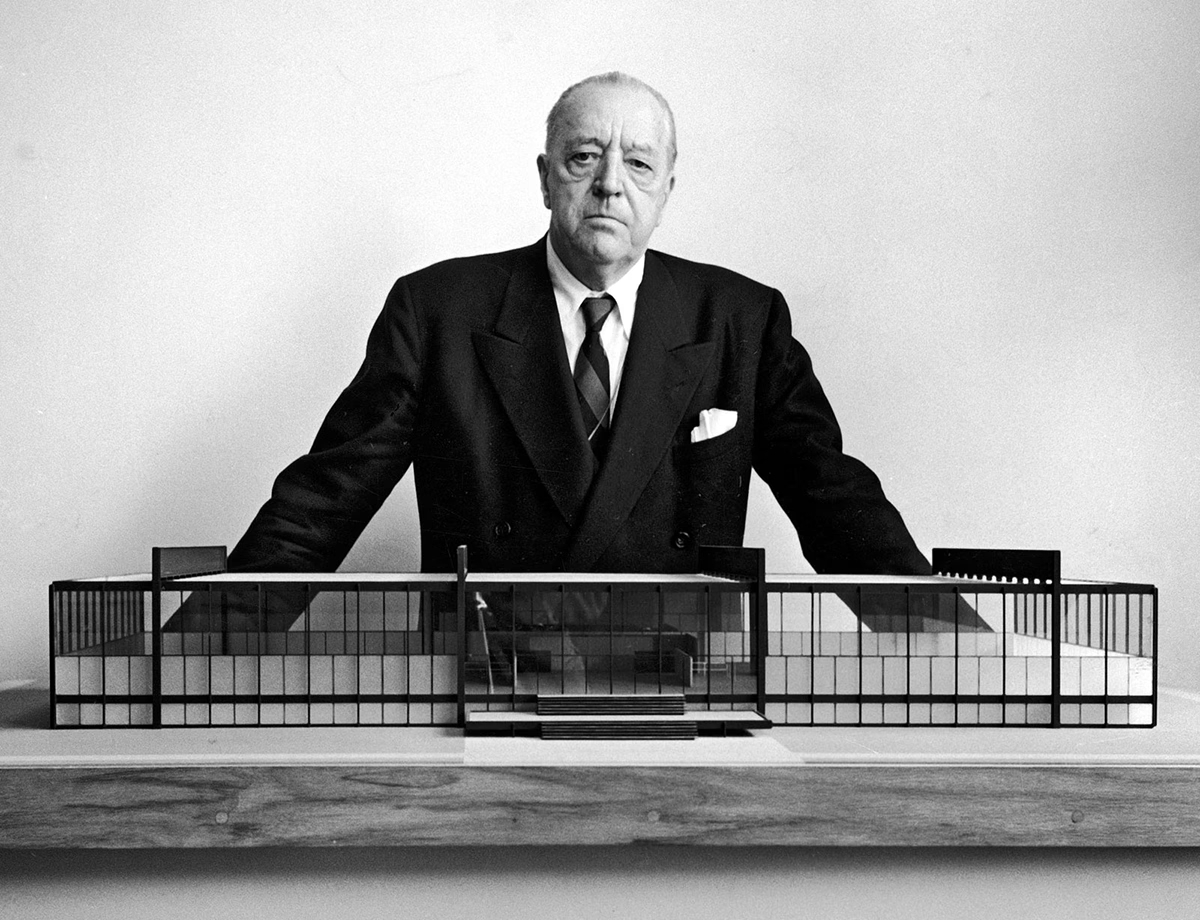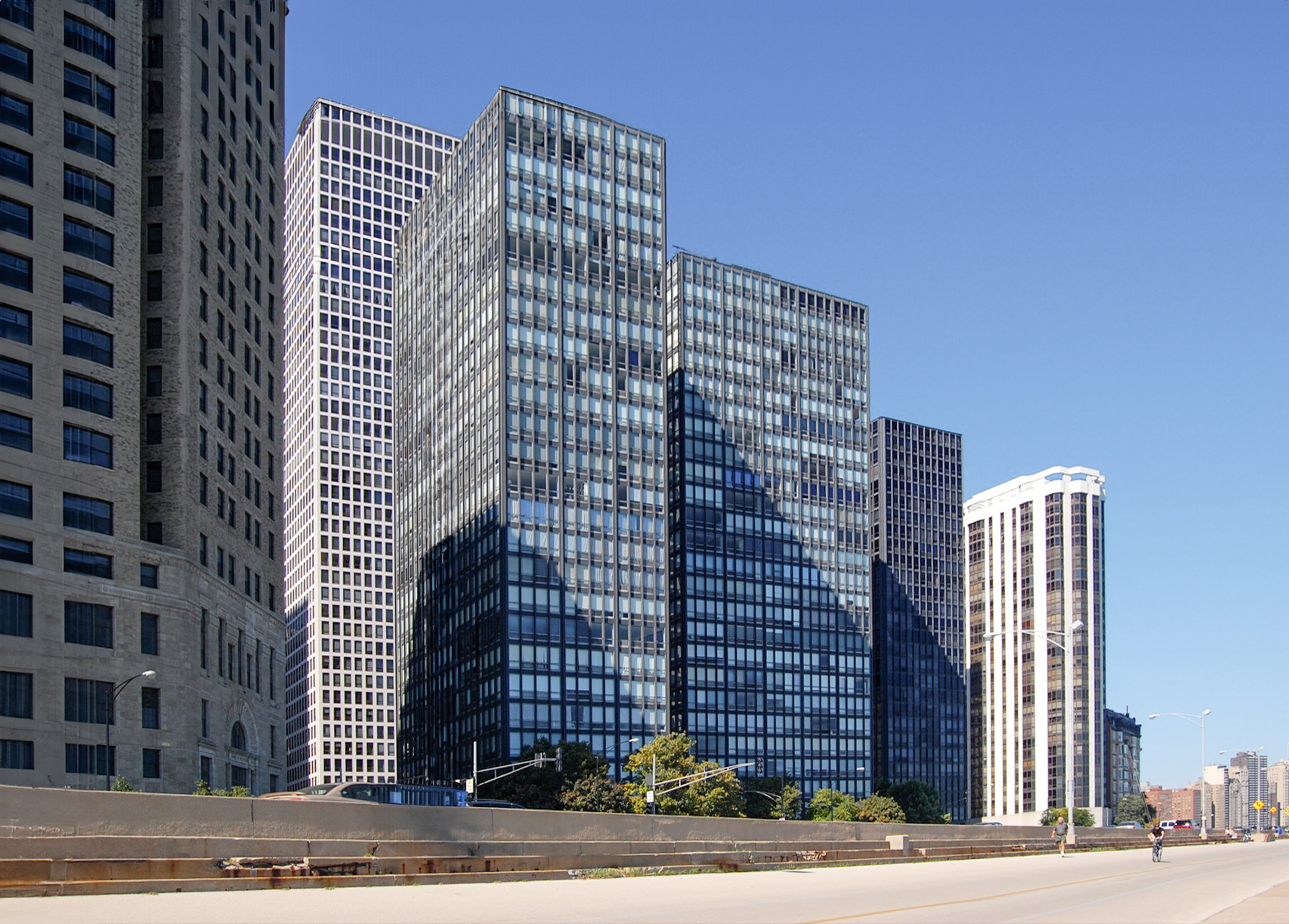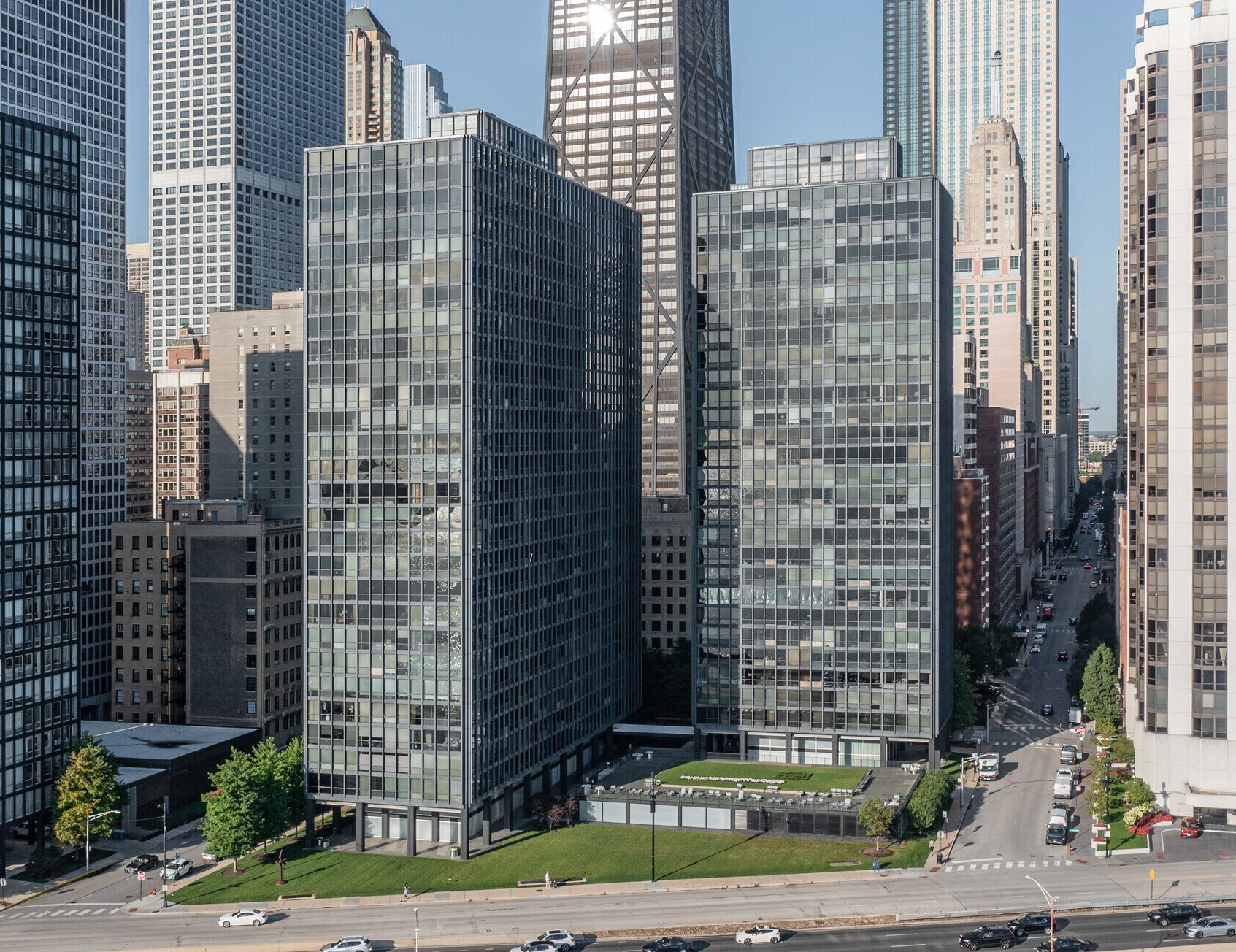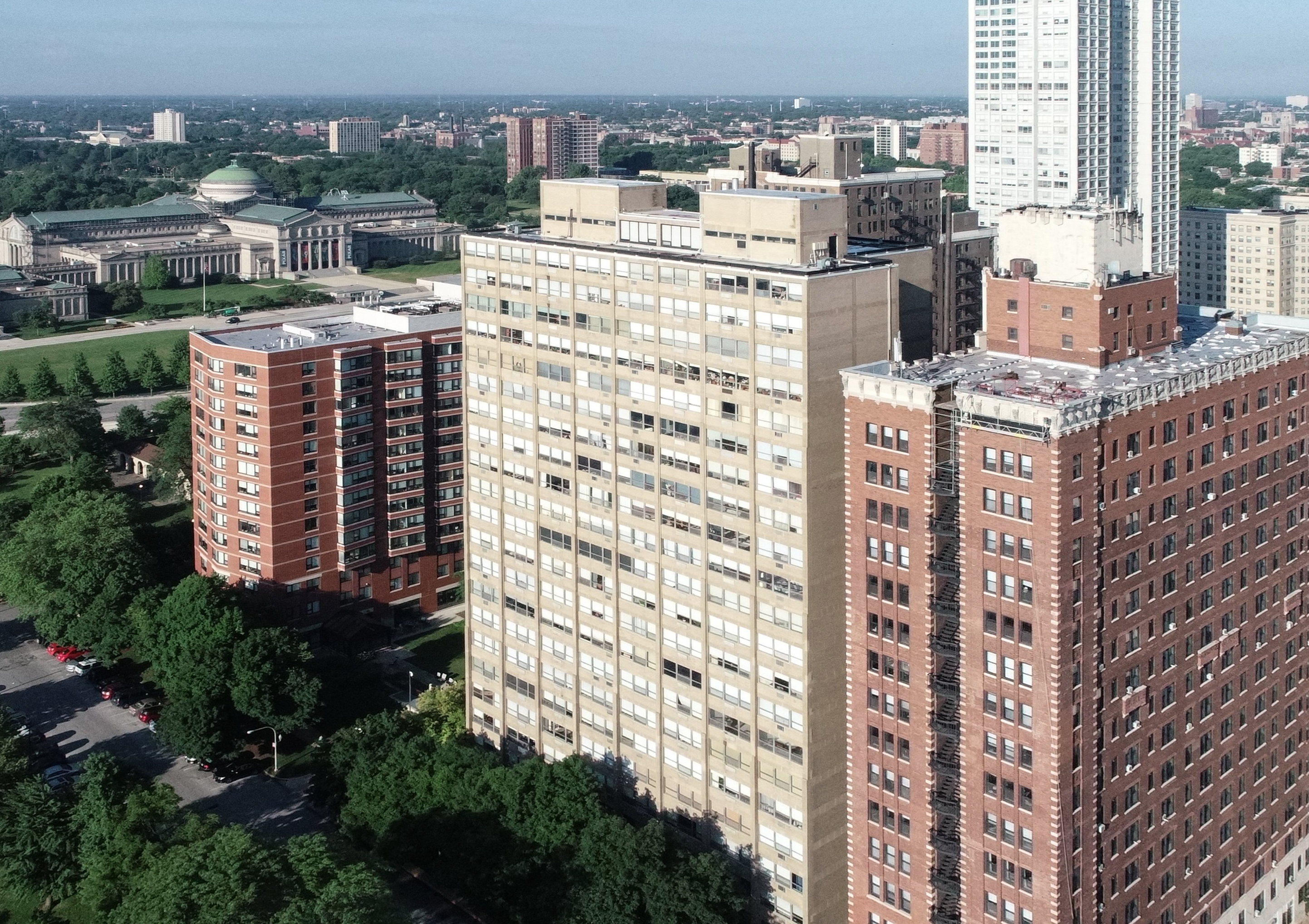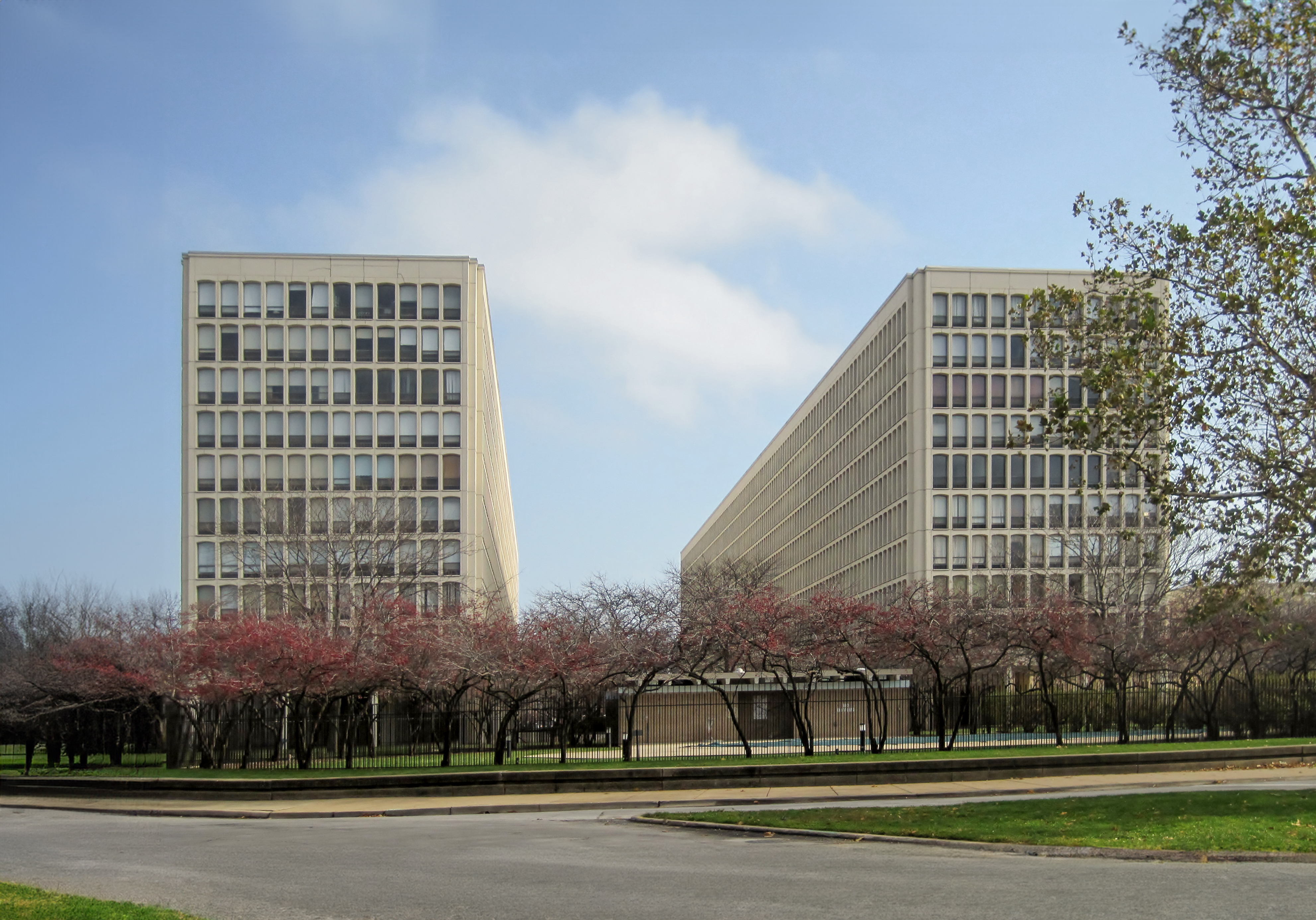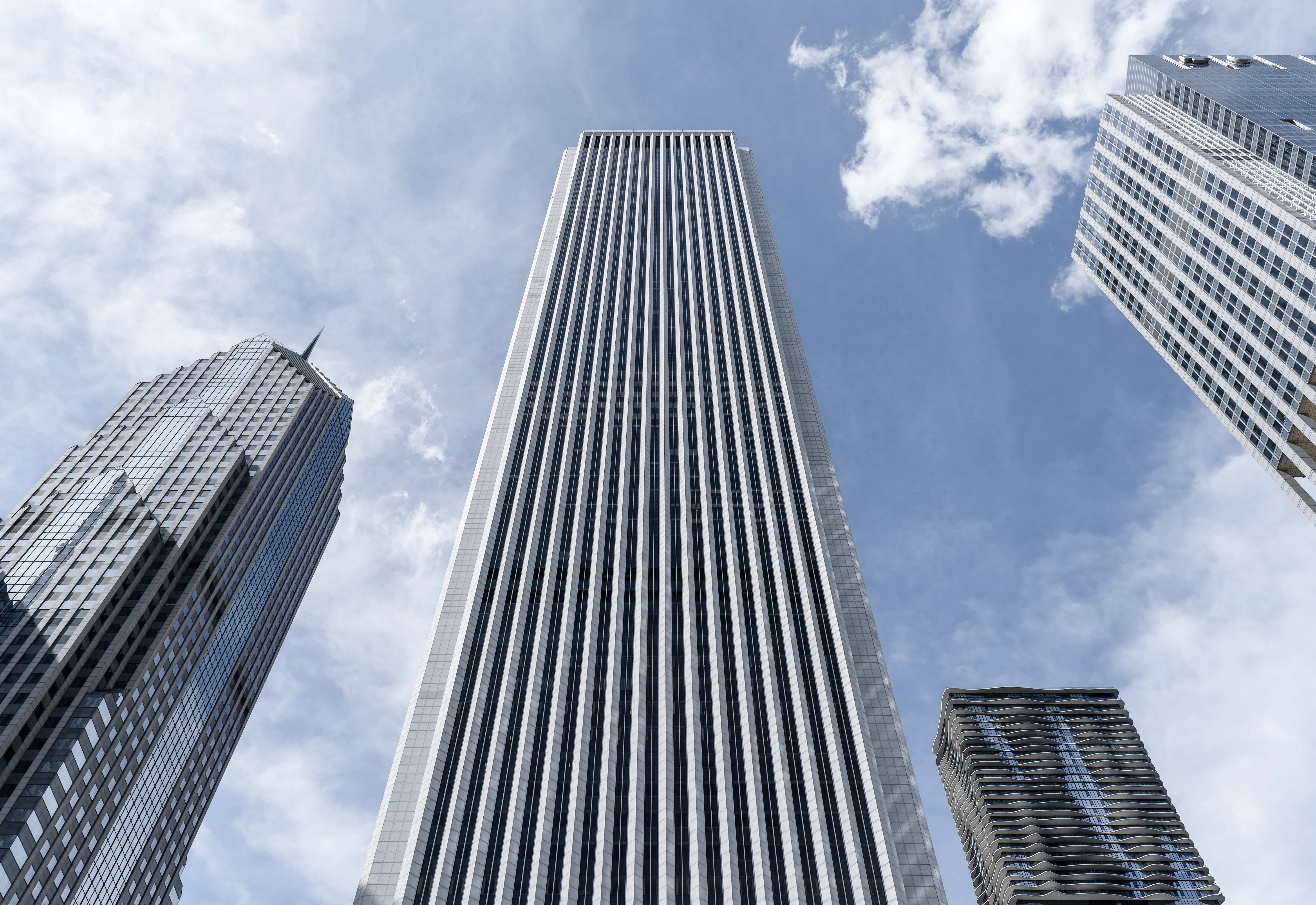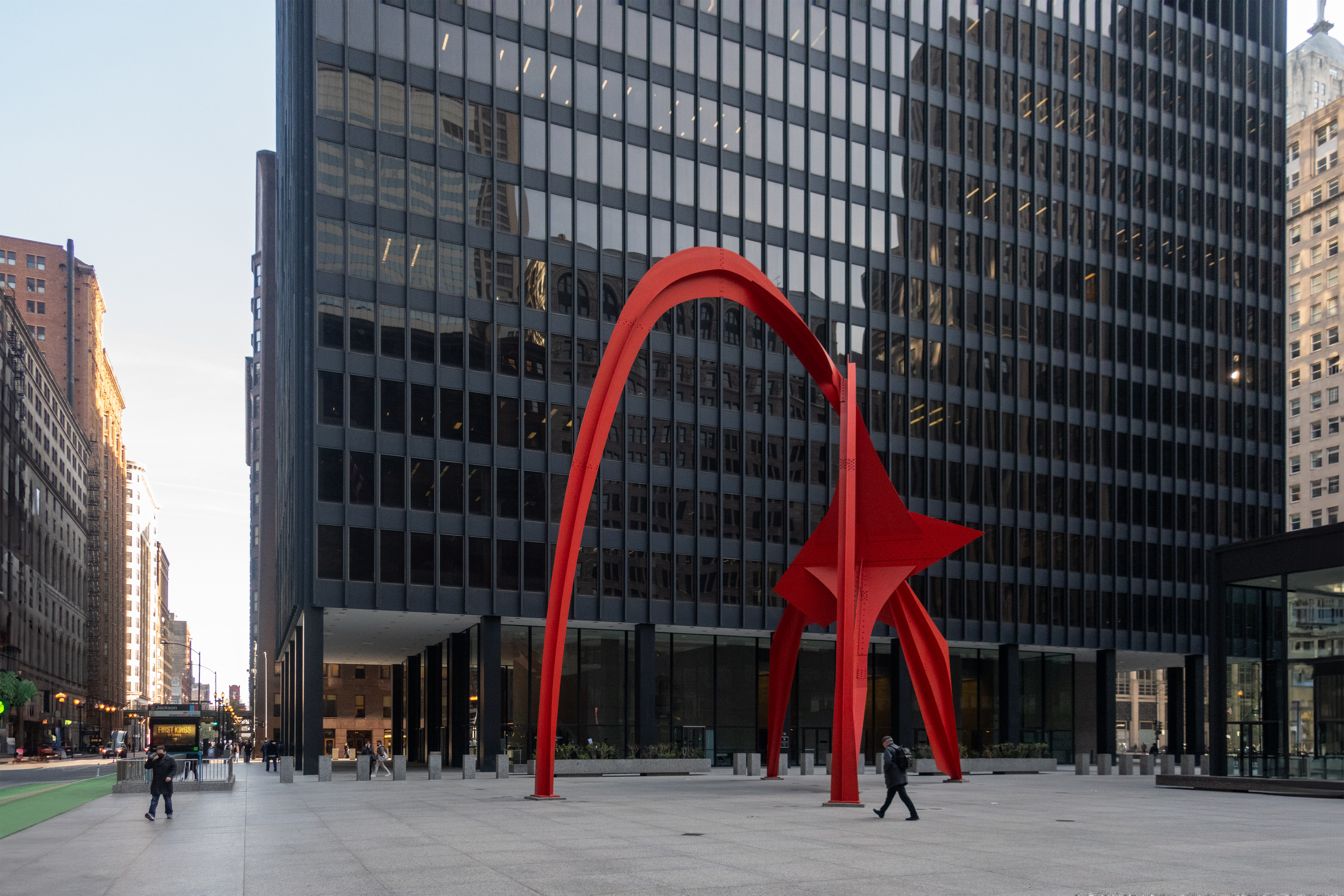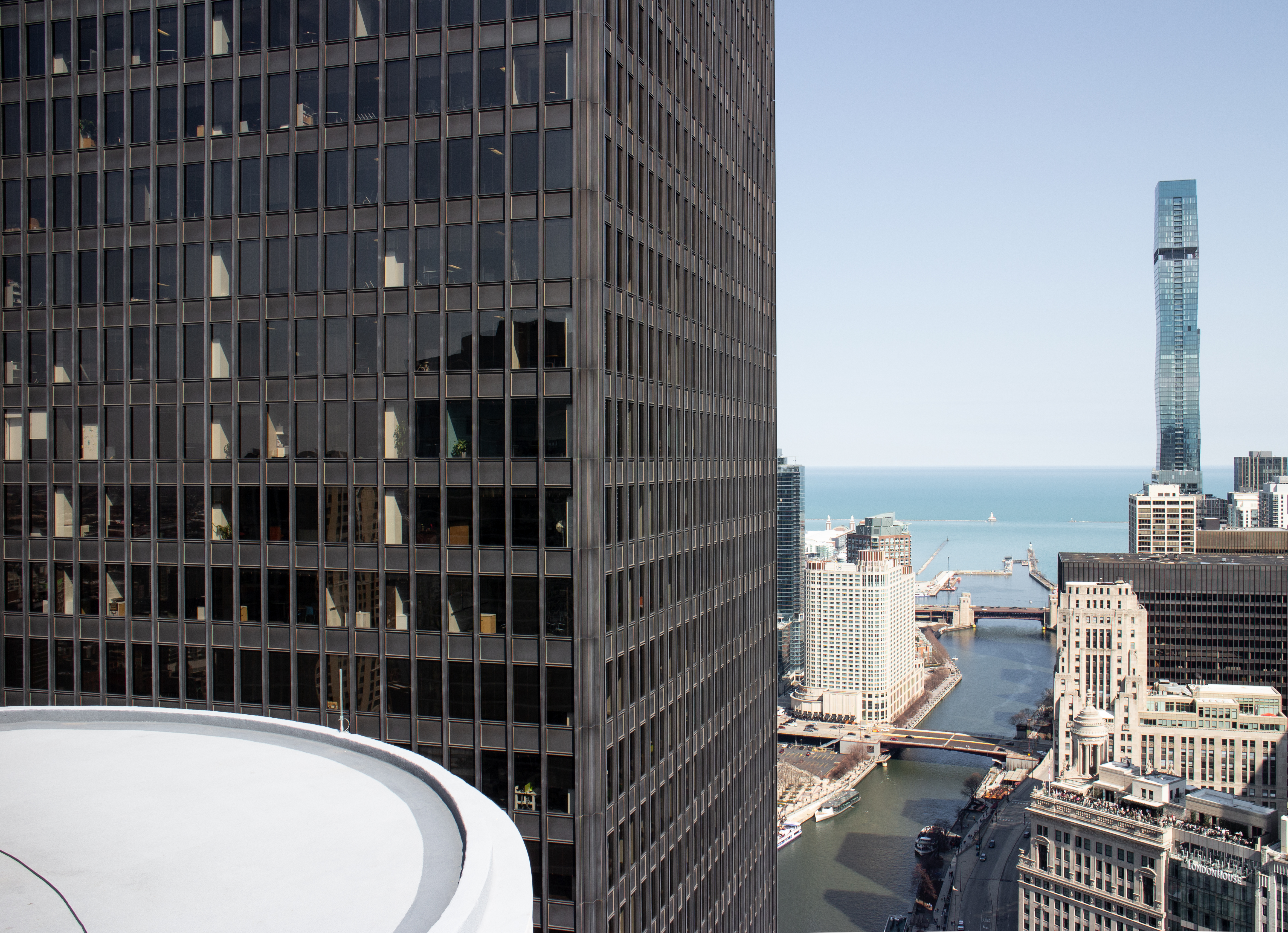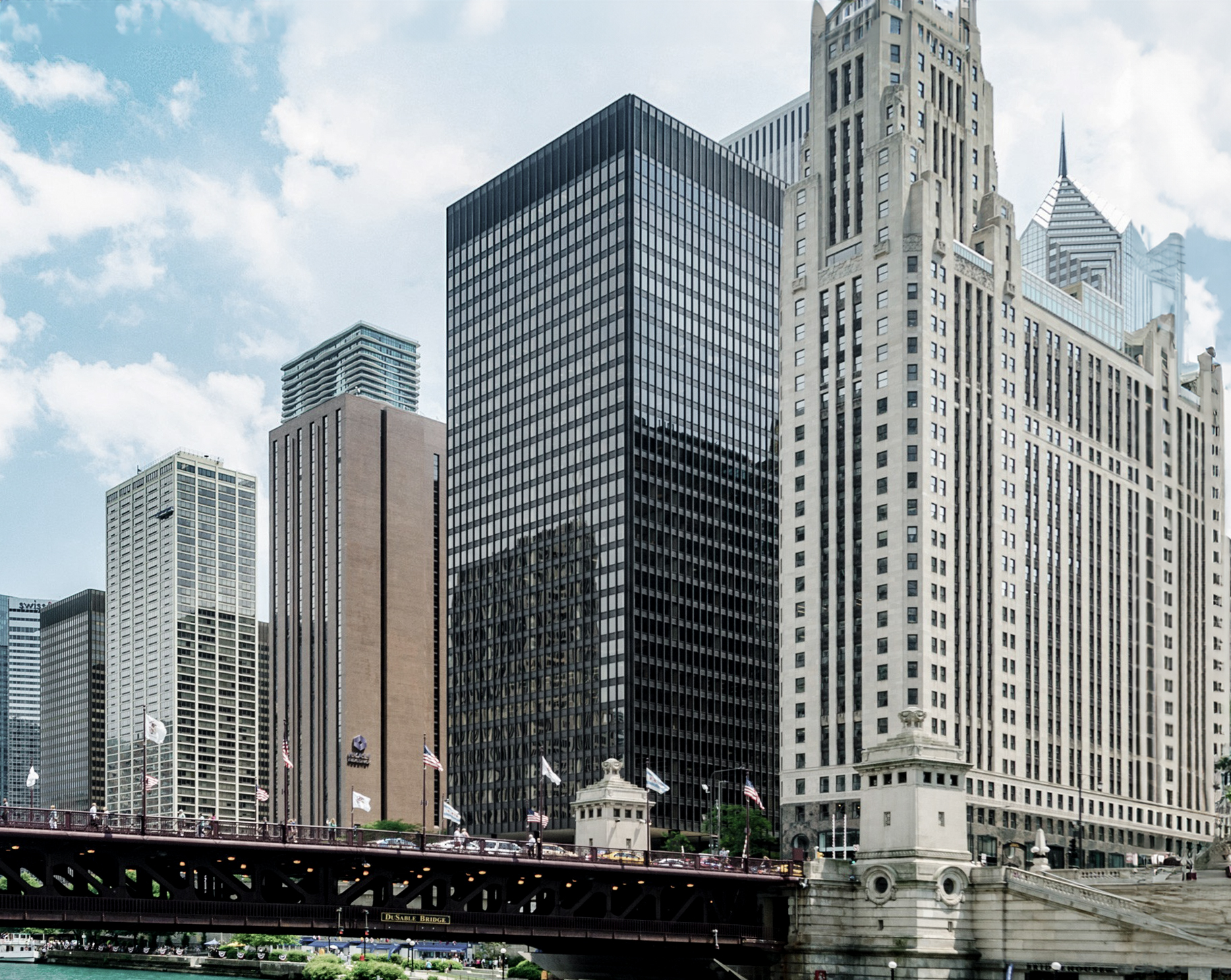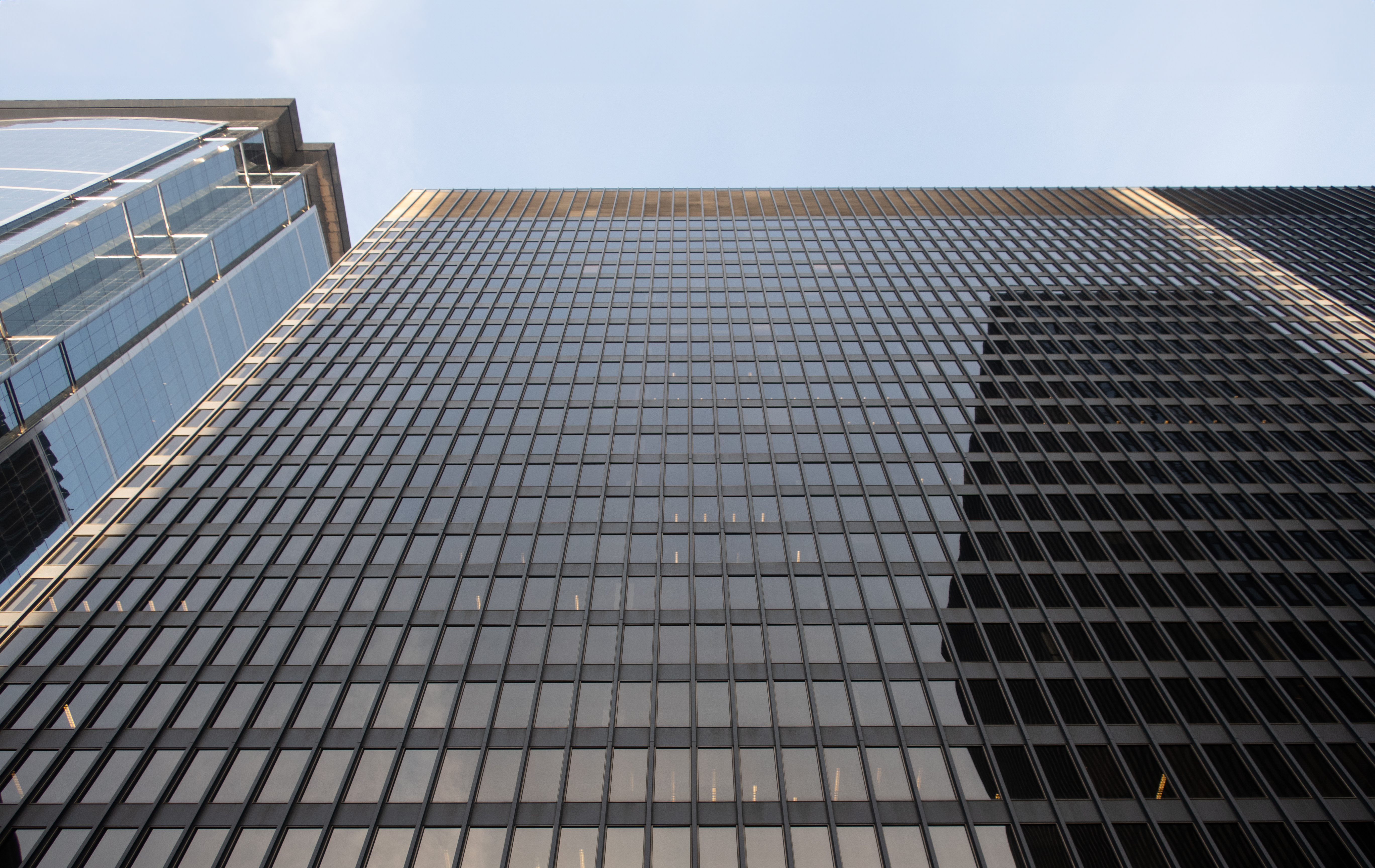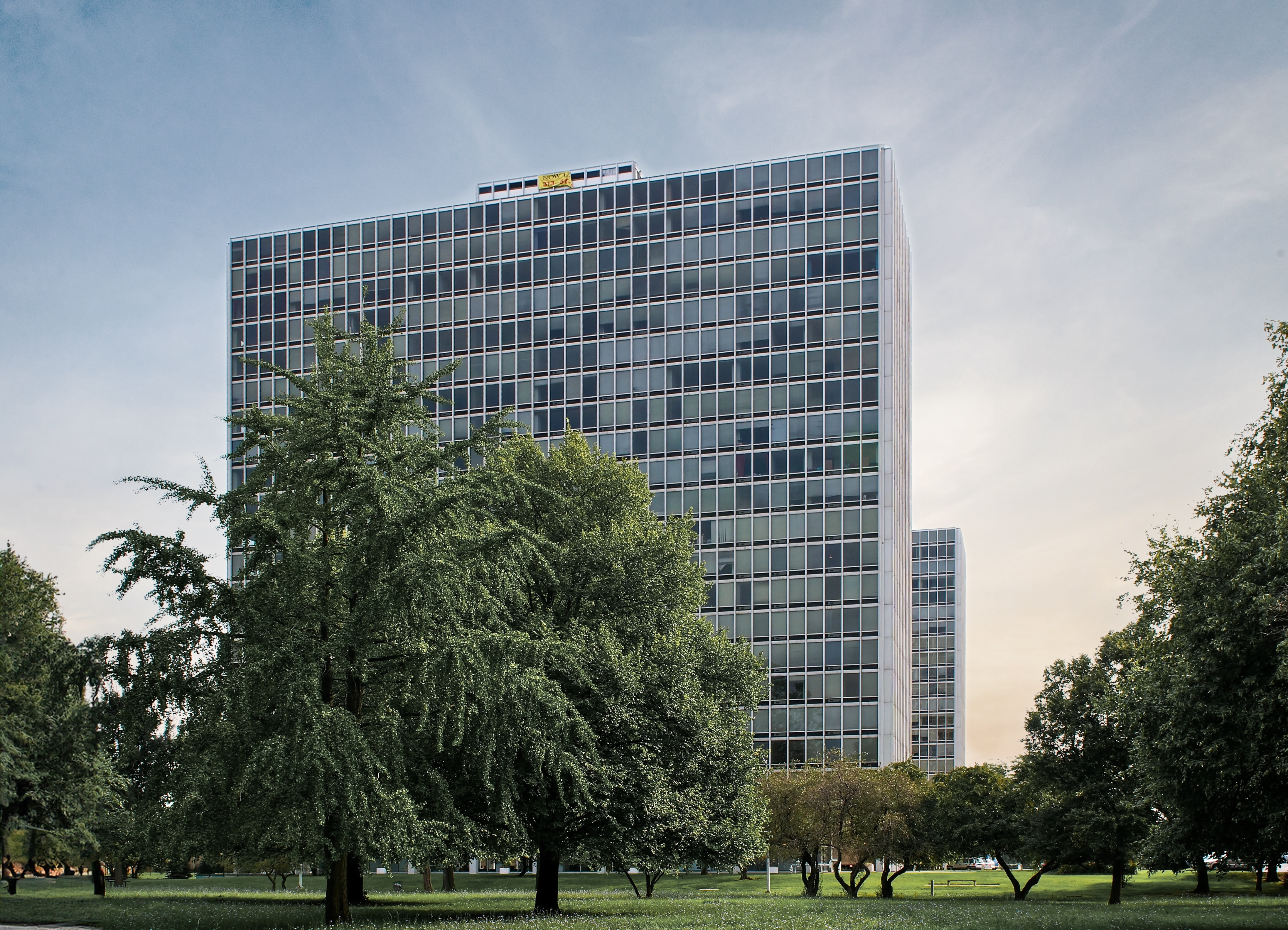The Two Illinois Center is an International Style skyscraper designed by Mies van der Rohe, with Fujikawa Conterato Lohan Associates as lead architect, and built between 1970 and 1972 in Chicago, IL.
Its precise street address is 233 N. Michigan Av, Chicago, IL. You can also find it on the map here.
Together with One Illinois Center, Two Illinois Center comprises the Illinois Center, which is primarily dedicated to office space.
The streets that intersect the complex are structured on three levels: the middle level facilitates direct traffic, the lower level is designated for service vehicles, and the upper level handles local traffic.
Within the building’s underground pedestrian walkway, a vibrant community of commercial services caters to the general public. This area is connected to three levels of underground parking that are shared across the entire complex, which also includes four hotels and provides access to both the El and Metra train lines.
The building underwent a major restoration in 2018. The architect commissioned to undertake this restoration was Goettsch Partners.
